Abstract
The authors evaluated enhanced perinatal services developed by public health specialists that were implemented statewide through specially certified Medicaid providers to find out whether they were as effective as those services originally tested in the public health agency's pilot project, and more effective than services from regular Medicaid providers. Multivariate logistic regression analyses yielded adjusted odds ratios of use of care and health outcome measures for the statewide services compared with both the pilot project and routine Medicaid care. Although women receiving the enhanced services implemented statewide did not return for prenatal visits as well as those in the pilot project, they did better than women with routine Medicaid providers. Women who kept at least the eight prenatal visits recommended by the Public Health Service in 1989 had risks of low weight births no different from those in the pilot project and significantly better than those for women with at least eight visits with routine Medicaid providers (adjusted odds ratio 0.70 with a 95 percent confidence interval from 0.54 to 0.91). Thus, there is evidence for the efficacy of the services, but additional improvement could be realized through improving the use of care.
Full text
PDF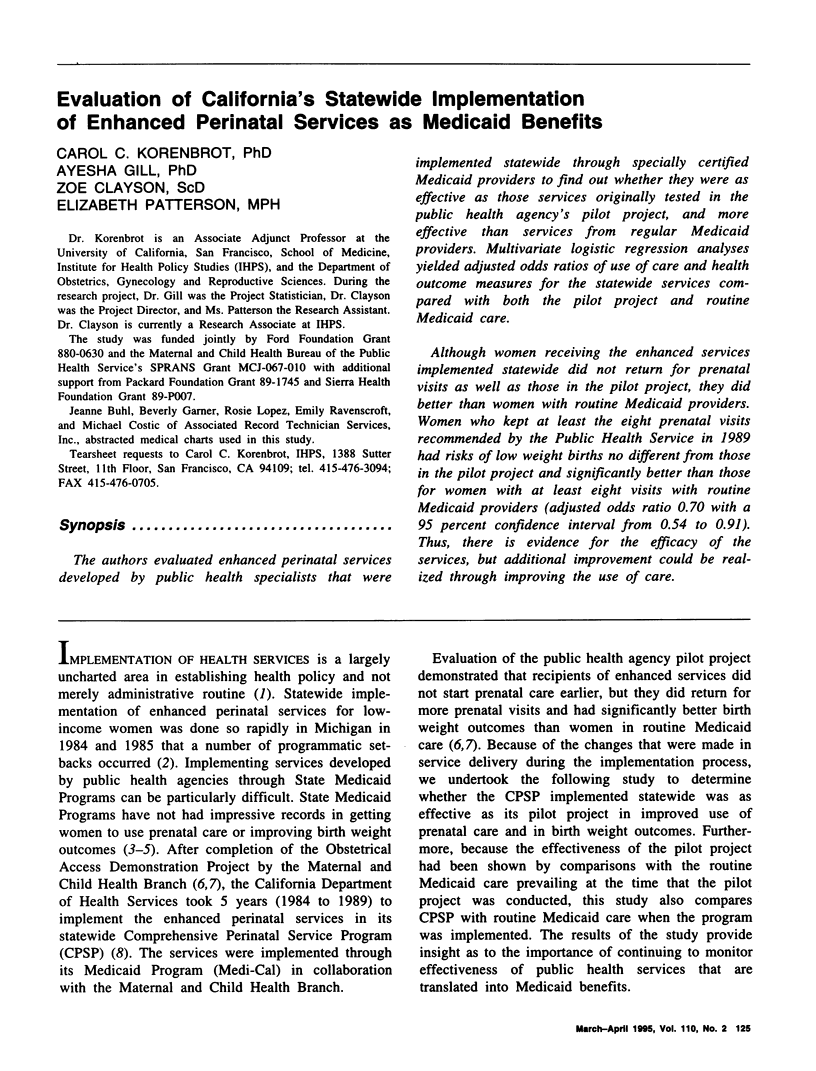
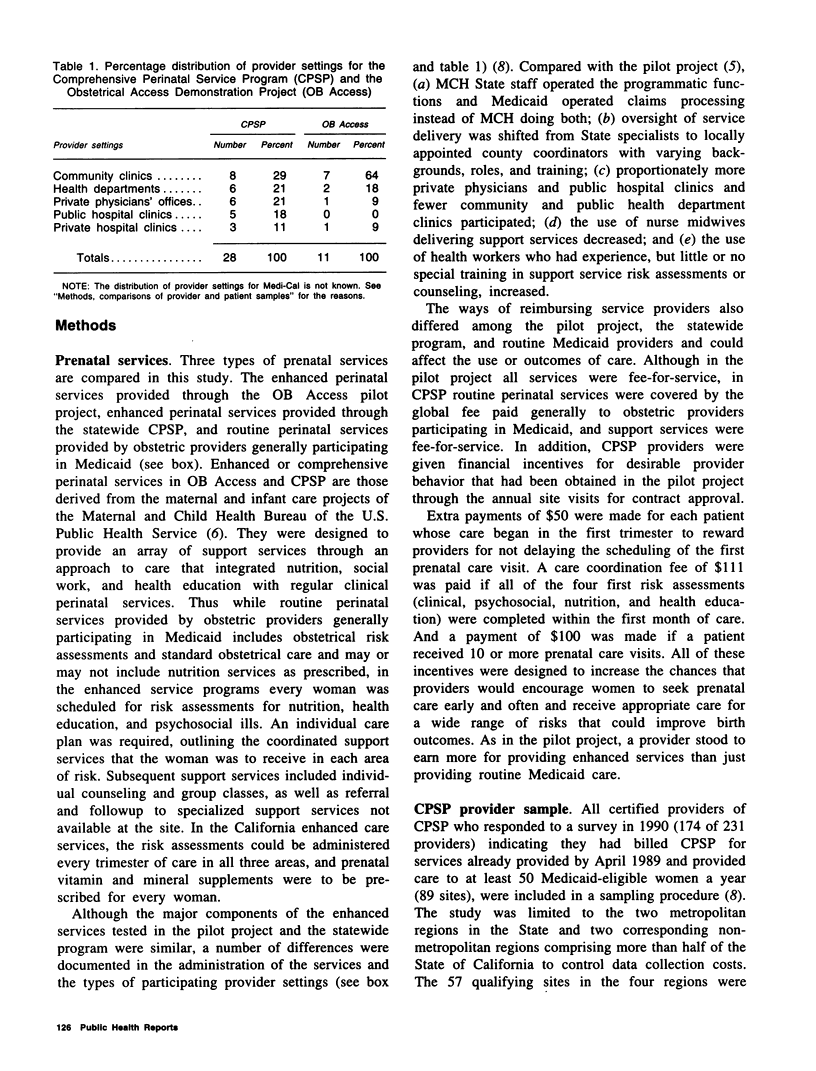
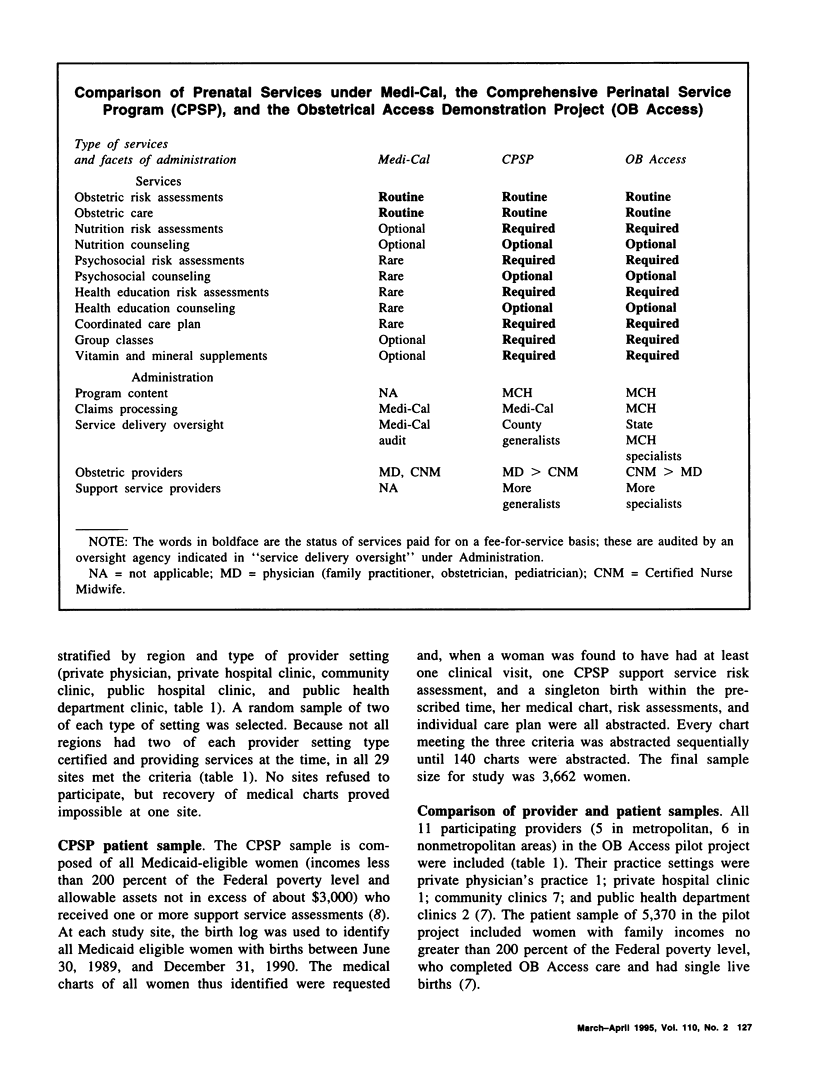
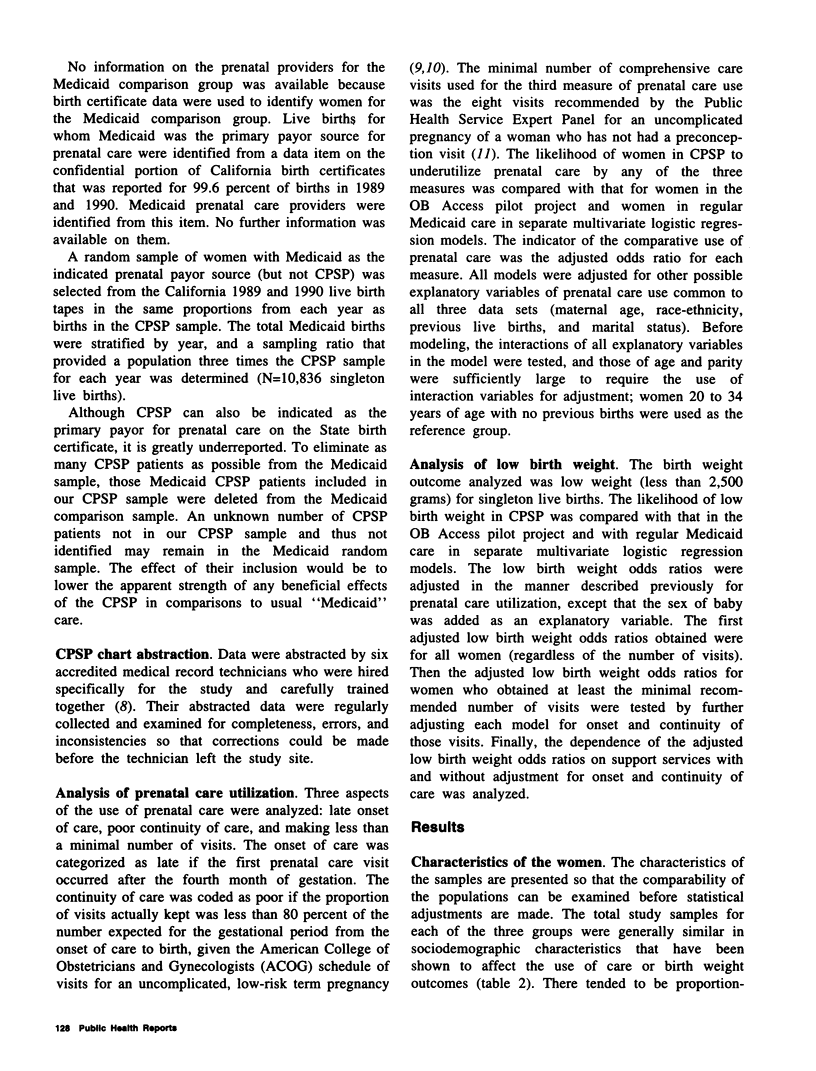
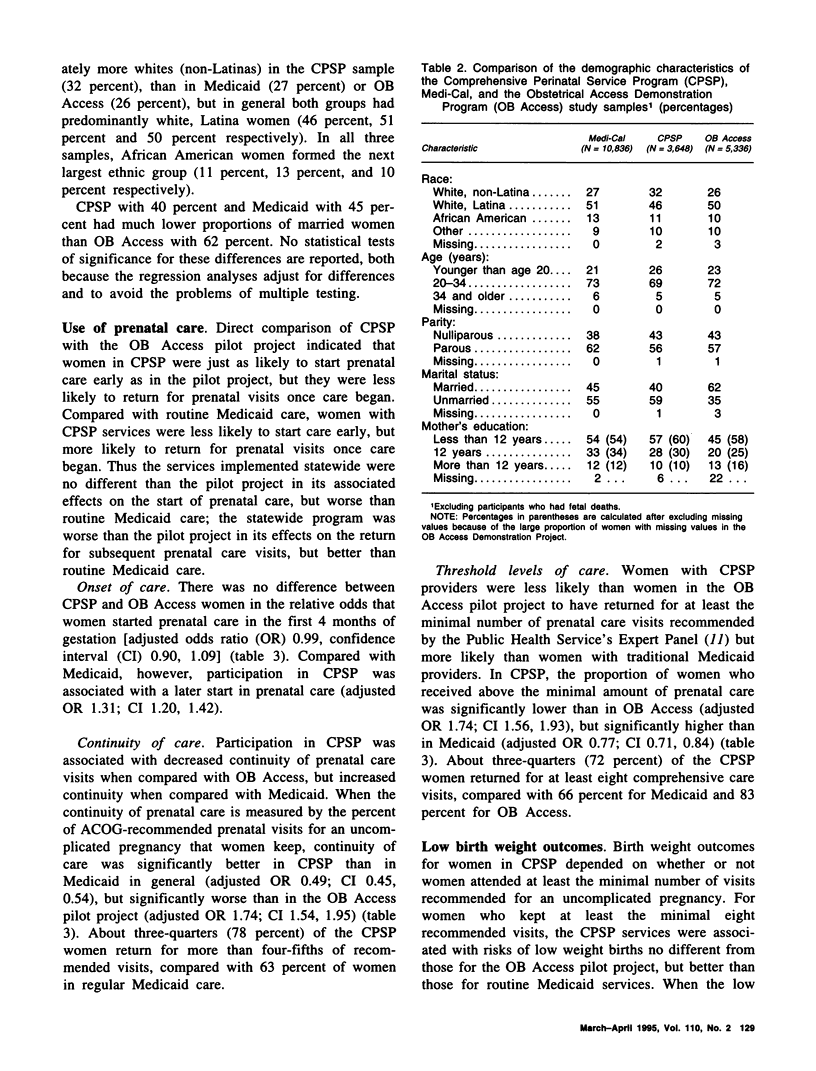
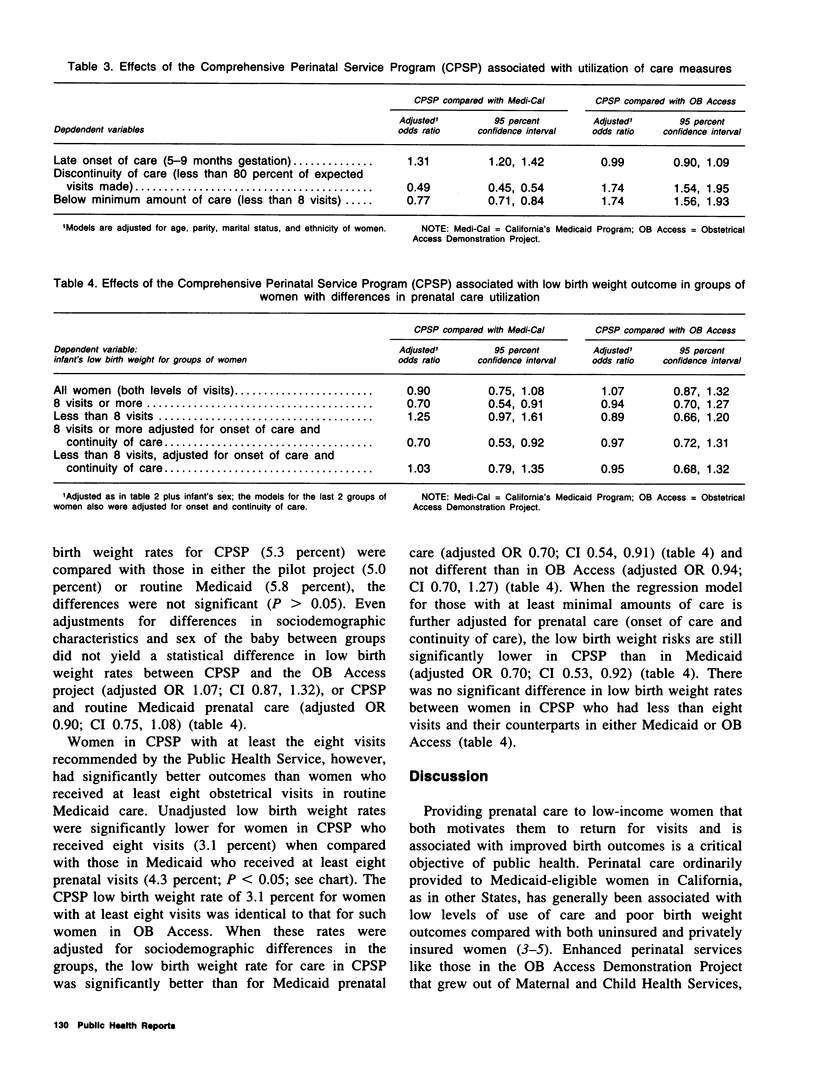
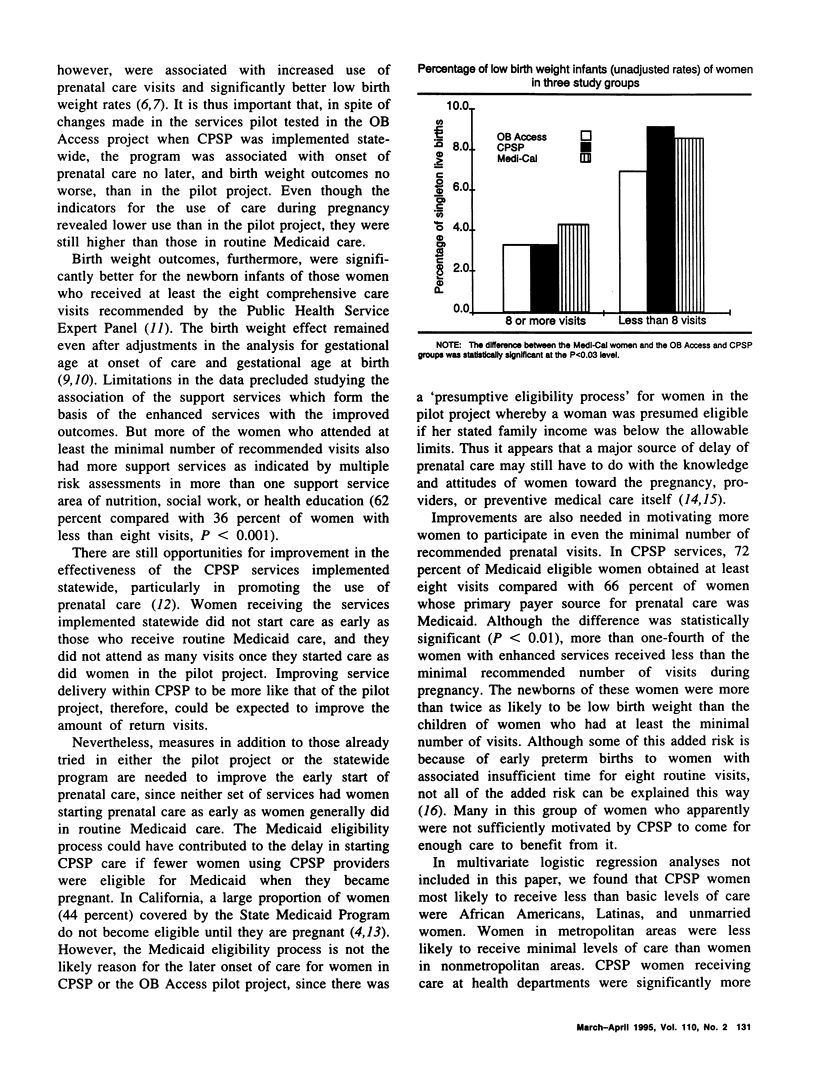
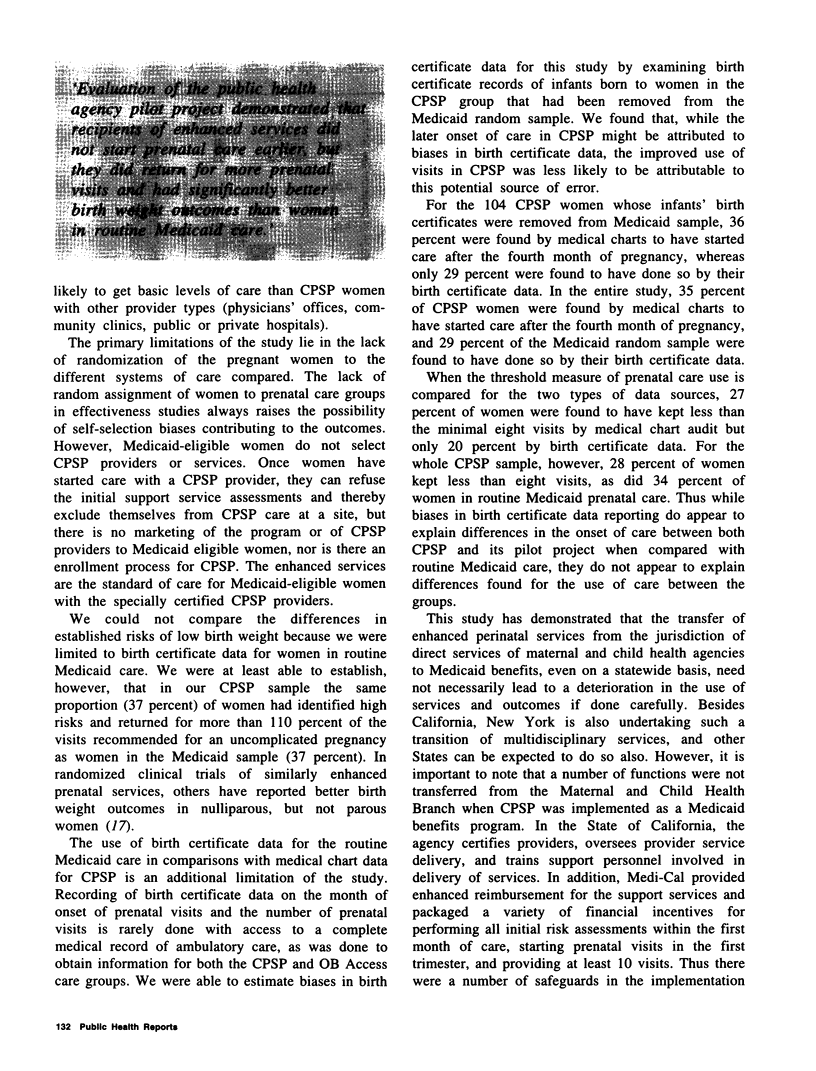
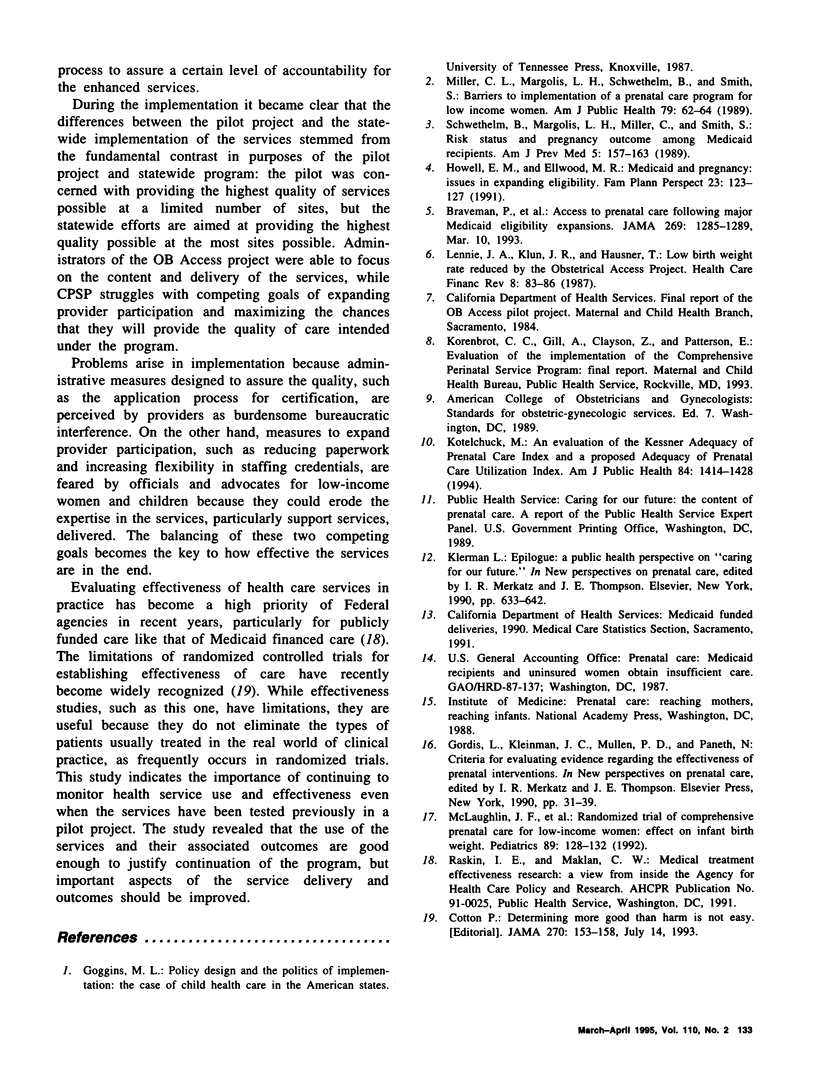
Selected References
These references are in PubMed. This may not be the complete list of references from this article.
- Braveman P., Bennett T., Lewis C., Egerter S., Showstack J. Access to prenatal care following major Medicaid eligibility expansions. JAMA. 1993 Mar 10;269(10):1285–1289. [PubMed] [Google Scholar]
- Cotton P. Determining more good than harm is not easy. JAMA. 1993 Jul 14;270(2):153, 156-8. [PubMed] [Google Scholar]
- Howell E. M., Ellwood M. R. Medicaid and pregnancy: issues in expanding eligibility. Fam Plann Perspect. 1991 May-Jun;23(3):123–128. [PubMed] [Google Scholar]
- Kotelchuck M. An evaluation of the Kessner Adequacy of Prenatal Care Index and a proposed Adequacy of Prenatal Care Utilization Index. Am J Public Health. 1994 Sep;84(9):1414–1420. doi: 10.2105/ajph.84.9.1414. [DOI] [PMC free article] [PubMed] [Google Scholar]
- Lennie J. A., Klun J. R., Hausner T. Low-birth-weight rate reduced by the obstetrical access project. Health Care Financ Rev. 1987 Spring;8(3):83–86. [PMC free article] [PubMed] [Google Scholar]
- McLaughlin F. J., Altemeier W. A., Christensen M. J., Sherrod K. B., Dietrich M. S., Stern D. T. Randomized trial of comprehensive prenatal care for low-income women: effect on infant birth weight. Pediatrics. 1992 Jan;89(1):128–132. [PubMed] [Google Scholar]
- Miller C. L., Margolis L. H., Schwethelm B., Smith S. Barriers to implementation of a prenatal care program for low income women. Am J Public Health. 1989 Jan;79(1):62–64. doi: 10.2105/ajph.79.1.62. [DOI] [PMC free article] [PubMed] [Google Scholar]
- Schwethelm B., Margolis L. H., Miller C., Smith S. Risk status and pregnancy outcome among medicaid recipients. Am J Prev Med. 1989 May-Jun;5(3):157–163. [PubMed] [Google Scholar]


